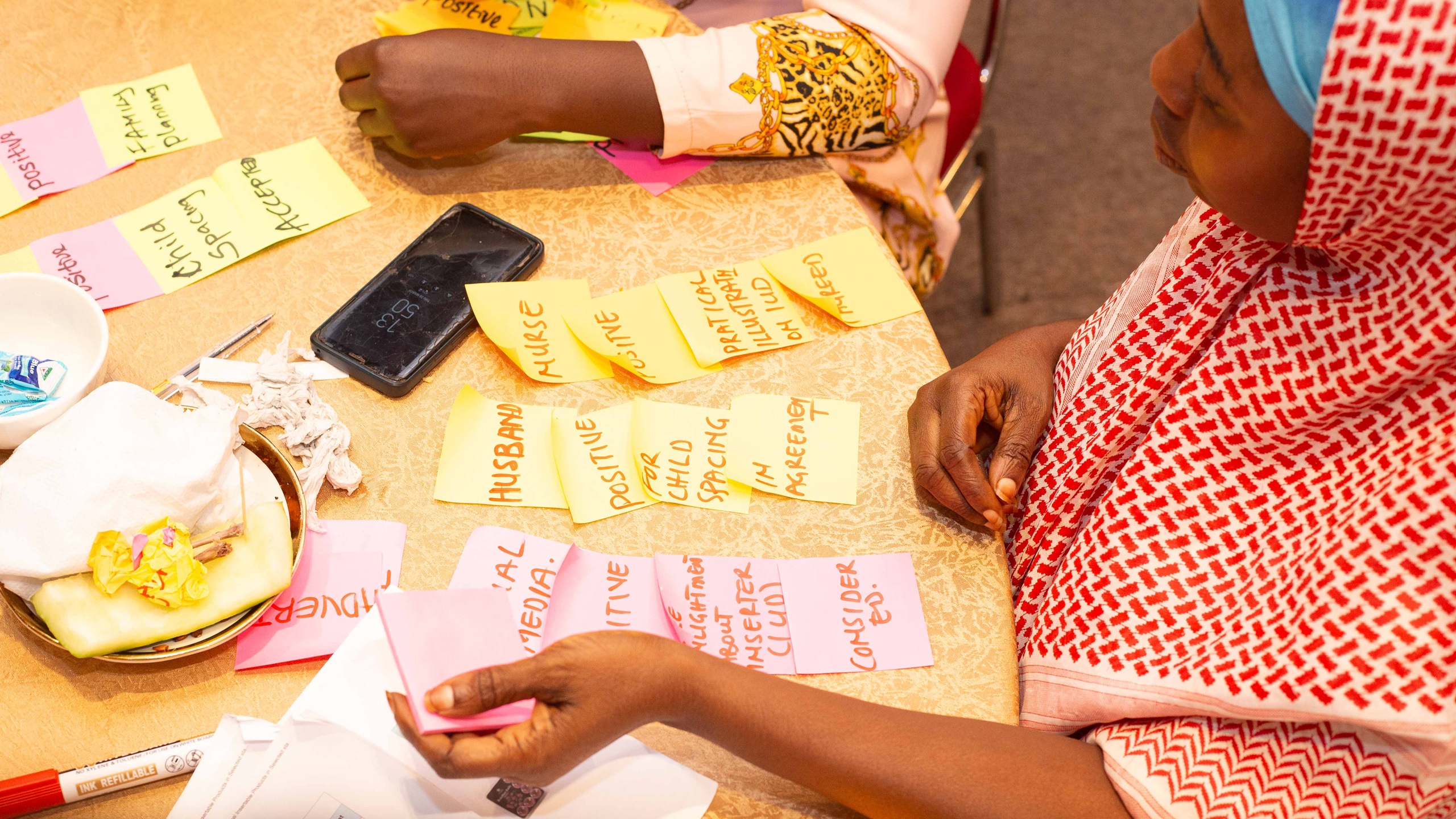Beyond One Size Fits All: Designing the Future of Non-Hormonal Contraceptives for Women

Millions of women worldwide face a critical challenge: accessing contraceptives that are both effective and aligned with their needs. For many, the options available are limited, commonly relying on hormonal methods that women often perceive as coming with disruptive side effects like menstrual irregularities. These perceptions lead to countless women never seeking modern contraceptive methods or discontinuing use, despite their desire for family planning solutions.
But what if the solution lies in starting with one simple question: What do women want?
This is the question that sparked Beyond One Size Fits All: Designing the Future of Non-Hormonal Contraceptives for Women, a multi-year project supported by the Gates Foundation. Its goal? To amplify the voices of women of reproductive age in underserved communities and reimagine the future of non-hormonal contraceptives (NHCs). At its heart, this initiative was about listening—bringing women’s perspectives to the forefront to shape solutions that fit their lives.
The Challenge: Amplifying the Unheard
In many underserved regions, particularly across Kenya, Nigeria, and Senegal, contraceptive choices have long been shaped by assumptions rather than the lived experiences of women. Decisions about design, delivery, and communication often leave out the voices of those they aim to serve, leading to a gap between product features and women’s real-world needs.
This disconnect is especially apparent when it comes to non-hormonal contraceptives, which remain underrepresented in family planning options. Women in these regions face cultural, social, and logistical barriers to accessing the solutions they need—ones that are effective, have minimal side effects, and allow for privacy in use.
The Beyond One Size Fits All project sought to bridge this gap by connecting women directly with NHC developers, creating a shared understanding of what matters most and fostering a vision for solutions that prioritize women’s voices at every stage of development.
The Process: Listening to Women’s Voices
To understand women’s needs, you first have to listen. Over the course of the project, the team engaged with women across Kenya, Nigeria, and Senegal, representing a range of ages, cultural contexts, and socioeconomic backgrounds. Using the Pathways segmentation model, we ensured that voices from vulnerable groups—those with the least access to family planning—were front and center.
“This project isn’t just about improving contraceptive options—it’s about fundamentally changing how women’s needs are heard and prioritized in global health,” said Angela Hariche, CEO of Catapult Design. “Over three years, we’ve listened to 1,100 women across Kenya, Nigeria, and Senegal. Their voices remind us that solutions aren’t one-size-fits-all. Our hope is that this work sets a precedent for putting women’s lived experiences at the center of innovation.”
More than 1,100 women participated in over 1,100 hours of interviews and focus groups, sharing their hopes, frustrations, and fears. Their perspectives illuminated how deeply personal contraceptive decisions are, shaped not only by health concerns but also by cultural, emotional, and social factors. Additional concerns included factors like pleasure, peace of mind, relationship dynamics, and financial circumstances.
One participant from Senegal shared, “If I stop taking the contraceptive, it’s because I want to get pregnant again, so I don’t want to wait long for that to happen.”
This sentiment underscored the importance of a quick return to fertility and the ability to space out, rather than limit, childbirth—one of many attributes women prioritized. Another participant in Nigeria described her struggle with the side effects of hormonal contraceptives, saying “It shouldn’t cause pain in my stomach or rashes all over my body, and it should improve my skin.”
Across regions, women voiced a consistent need for efficacy, but also emphasized the importance of solutions that fit seamlessly into their lives. Privacy, discretion, and minimal side effects were recurring themes, especially in contexts where discussing family planning is taboo.
By collaborating with women across these diverse settings, the project team developed tailored concepts that reflect the cultural and social nuances of each region. These concepts were presented through visualizations, value propositions, and decision-making journeys, creating a bridge between women’s experiences and product development.
The Findings: A Roadmap for the Future
The research uncovered insights that go beyond product design; they tell the story of how women navigate complex decisions in their reproductive health.
One of the most striking takeaways from the research was the importance of creating a suite of contraceptive options tailored to women’s diverse needs and circumstances across their reproductive journeys. The idea that “one-size-fits-all” does not work was consistently underscored by the women who participated.
One participant from Kenya captured this sentiment perfectly: “Provide us options for different life stages, so we can choose what fits our situation at the time.”
Women expressed that their contraceptive needs change over time, influenced by personal, cultural, and financial circumstances. For instance, younger women or those in casual relationships may prioritize short-acting, easily reversible options, while those nearing the end of their reproductive years or who already have children might prefer long-term methods that ensure reliability with minimal upkeep. Among the most important findings were:
- Efficacy is non-negotiable: However, efficacy must also be paired with other attributes like ease of use and minimal side effects to encourage adoption.
- Preference for Versatility: Women frequently cited the need for choices that adapt to specific points in their lives. For example, options that allow for a seamless return to fertility after discontinuation were critical for women planning to have children in the future.
- The Role of Side Effects: Not all side effects are created equal, and priorities differed significantly across geographies. While menstrual bleeding irregularities were a universal concern, weight gain was more significant in Kenya, while skin issues were flagged in Nigeria.
- Cultural and Personal Alignment: The segmentation study revealed that contraceptive choices are deeply personal and informed by cultural beliefs, social roles, and relationship dynamics, validating the need for contraceptive developers to move beyond designing singular solutions. Instead, a diverse portfolio of options is essential, enabling women to select methods that resonate with their values, lifestyles, and life stages.
The Impact: Looking Ahead
This project did more than gather stories; it created a roadmap for reimagining contraceptive solutions. The data captured during this research will serve as a resource for ongoing contraceptive development, providing a roadmap for creating NHC solutions that truly align with women’s preferences.
For Catapult Design and our partners, this work is about more than just data—it’s about redefining how women’s health solutions are imagined. By starting with women’s voices and experiences, the Beyond One Size Fits All project offers a vision for the future of family planning: one where women’s needs come first.
Stay tuned as we continue to share more insights from this transformative project and work toward creating options that empower women at every stage of their lives.
Closing Notes
At Catapult Design, we are proud to work alongside the Gates Foundation, Spindle Design, Open Knowledge Framework, DODO Design, YUX, and Alt Unfold in this critical mission. This is just the beginning of what’s possible when we lead with listening.


